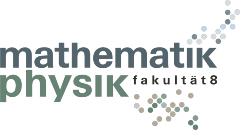16:00 in lecture hall V 57.01
- Lecture by Dipl. phys. Winfried Kaiser
Carl Zeiss SMT (retired) - Students interview the speak
from 17:30 in the outdoor area - University Center (between Pfaffenwaldring 53 and Universitätsstraße 38)
- Awarding of the Lecturer Prizes by the departments of mathematics and physics
- Delicious barbecue and chilled drinks
- Live band
- Quiz
Afterwards, the traditional summer party of the Faculty of Mathematics and Physics will take place. The student cuncil of mathematics and physics will present the lecturer awards. Our summer party will be musically framed by the band and of course there will be drinks and grilled food.
All members, alumni and friends of the Faculty of Mathematics and Physics are invited.
Dipl. phys. Winfried Kaiser
Carl Zeiss SMT (retired)
The phenomenal development of lithographic optics
Photo-lithography is one of the most important key processes in the manufacture of microchips. Chip manufacturers worldwide use lithography optics to expose their wafers with nanometer precision - the basis for the production of extremely powerful microchips. Lithography optics make a decisive contribution: the resolution of the projection optics and the capabilities of the illumination system have a decisive influence on how small the structures on a microchip can be. The development of integrated circuits ("ICs") has been following "Moore's Law" for almost 6 decades, which predicts that the transistor density will double every 2 years, realized primarily by increasing the resolution of the lithography optics. Meanwhile, IC technology has the so-called "3nm node" in mass production and the "2nm node" is just around the corner.
The lecture will shed light on the history of optical lithography from the g-line (wavelength 436nm) to EUV lithography (13.5nm). It will show how the continuous goal of increased resolution was realized with different means.
The functional principle of an EUV lithography system ("scanner") with EUV optics as the central element is shown. The structure and the extreme physical and technical challenges as well as the performance achieved by the current EUV optics are discussed in detail.
To continue Moore's Law and to further increase resolution, the next generation of EUV lithography, called "High NA EUV", is currently in production. It poses further, even more extreme challenges and requires a completely new production infrastructure. The possible further development is being discussed.






